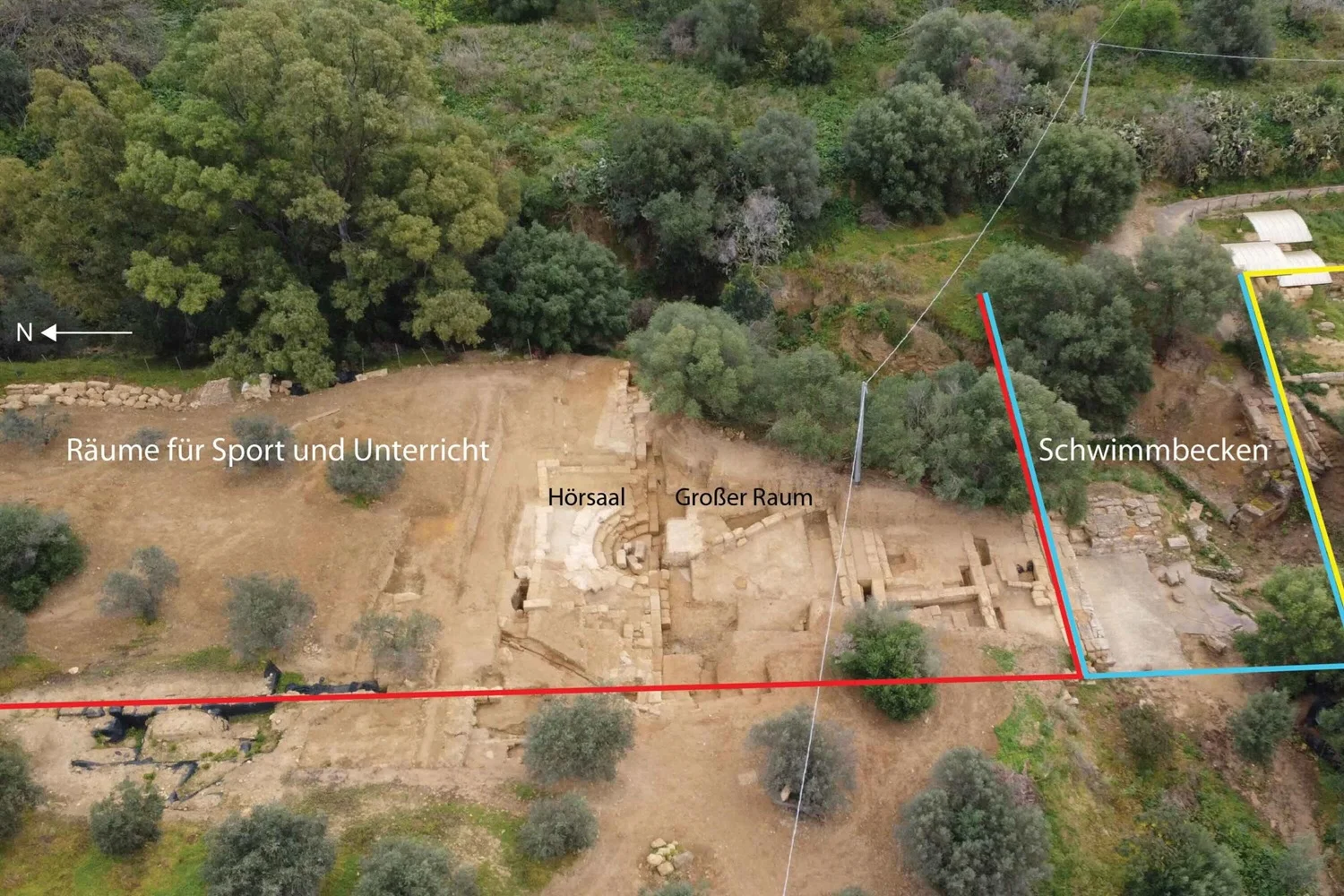An international team of archaeologists, led by Prof. Dr. Monika Trümper and Dr. Thomas Lappi from the Free University of Berlin have discovered an ancient lecture hall during excavations at Agrigento.
Located on the southern coast of Sicily, Agrigento was one of the most important and prosperous cities of the ancient Mediterranean. The city was founded around 580 BC by Greek settlers from Gela and Rhodes, which quickly rose to prominence as the largest Greek colony on the island.
Like many Greek cities, Agrigento had a gymnasium where young men were physically and intellectually prepared for their future roles as citizens. With its 200-metre-long running tracks and expansive swimming pool, Agrigento’s gymnasium stands out as the only known complex of its scale in the western Mediterranean.
Excavations in March 2025 uncovered the gymnasium’s ancient lecture hall, designed to seat around 200 people in eight ascending, semicircular rows. Experts date the hall to the 2nd century BC, making it the earliest known example of its kind in the ancient world—predating comparable structures by 200 to 300 years.
In the hall’s semicircular orchestra (where teachers and students once performed before an audience), archaeologists found two large blocks bearing a Greek inscription that mentions the gymnasiarch, the head of the gymnasium, and the renovation of the roof of the apodyterium (changing room), which a generous citizen financed from his own resources and dedicated to the gymnasium’s gods, Hermes and Heracles.
The lecture hall led to a large space measuring 11 by 23 metres. Equipped with benches, the space or second hall was likely used for intellectual pursuits, including classes, performances, and competitions. This distinctive architectural ensemble reflects the builders’ equal emphasis on cultivating both a “healthy mind” and a “healthy body.”
According to the Free University of Berlin: “The shape of the letters suggests that the inscription was engraved in the late 1st century BC, when Agrigento had long been under Roman rule. Nevertheless, the Greek language, Greek offices and traditions continued to be cultivated, and the Greek gymnasium continued to be used and maintained as a central educational institution for young people.”
Header Image Credit : Thomas Lappi – Monika Trümper
Sources : Free University of Berlin






